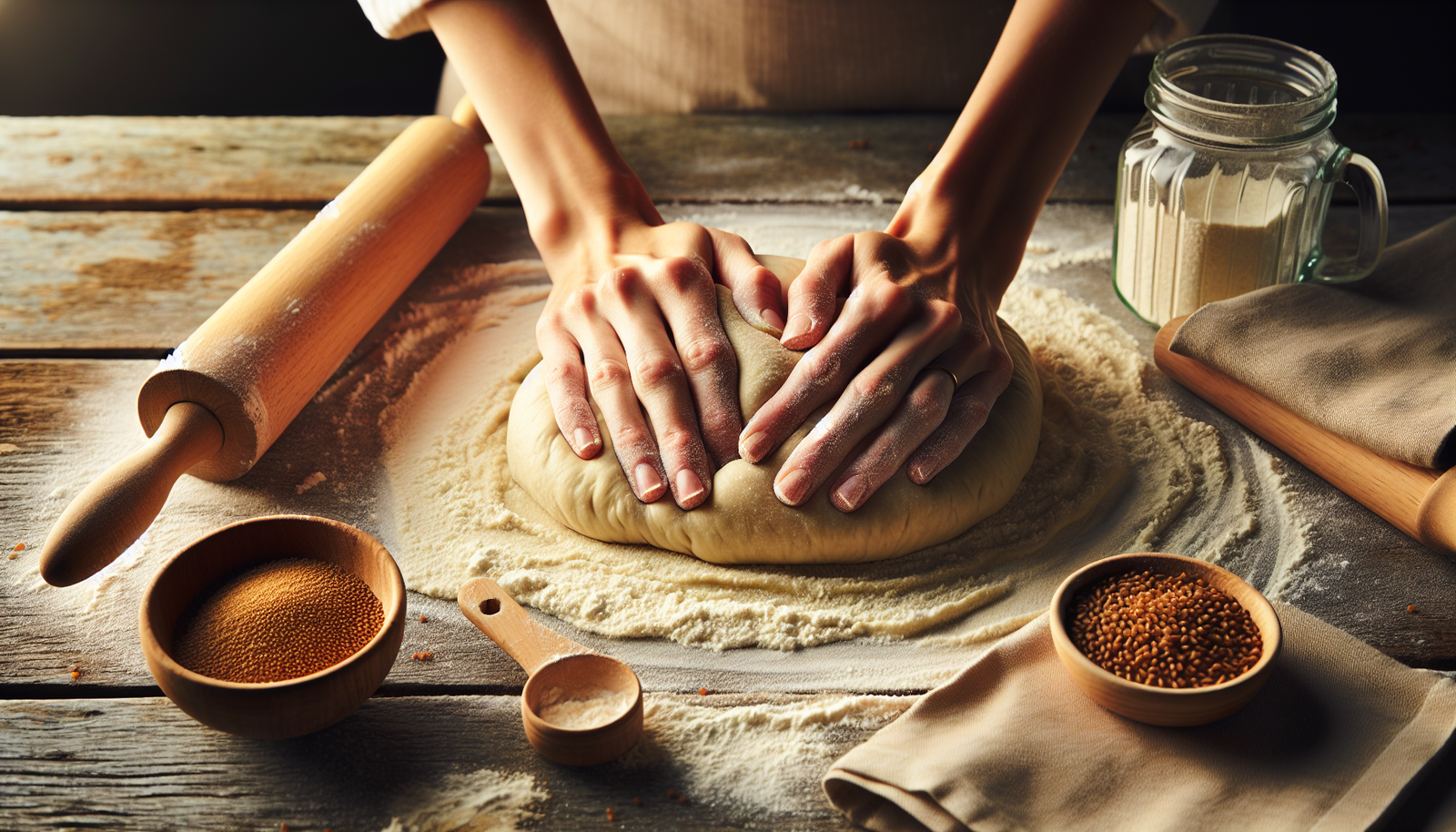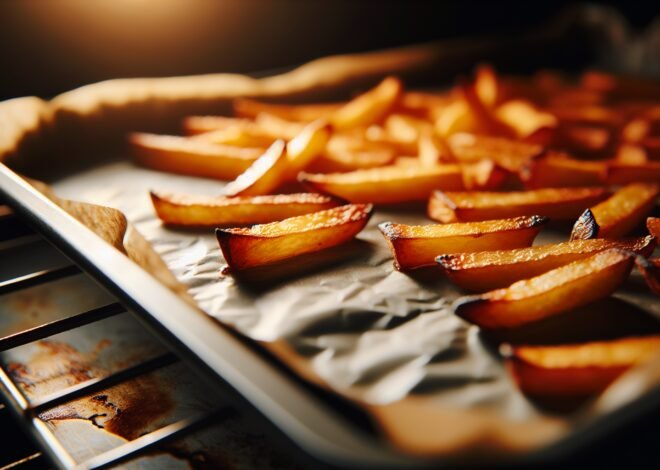
The Role of Yeast in Dough Making: Getting the Right Rise
Yeast in dough making plays a crucial role in achieving the perfect rise in baked goods, transforming simple ingredients into fluffy, delicious bread. Myriad factors such as temperature, moisture, and kneading techniques influence yeast activity. Did you know that a single gram of yeast can contain up to 20 billion tiny cells? This extraordinary microorganism is responsible for fermenting the dough, releasing carbon dioxide, which helps the dough expand and develop its characteristic texture and flavor. This article delves into the science behind yeast’s transformative power, the types of yeast best suited for various recipes, and essential tips for optimizing your baking process. Discover how harnessing yeast’s potential can elevate your baking skills to new heights.
Understanding the Basics of Yeast in Baking Bread
Yeast is a cornerstone of bread baking, turning simple ingredients into a delightful loaf with texture and flavor. Understanding how yeast works can elevate your baking game. Dive into the science and types of yeast to unlock the best results in your bread-making endeavors.
What is Yeast and How Does it Function in Bread Dough?
Yeast is a single-celled fungus that plays a crucial role in bread-making. It acts as a leavening agent, causing dough to rise and develop flavor. When mixed with dough, yeast ferments the sugars, producing carbon dioxide and alcohol. This process results in the expansion of the dough, creating the airy texture we love in bread.
In the world of baking, yeast comes alive when hydrated, feeding on sugars present in the flour. As it feeds, yeast releases carbon dioxide, which gets trapped in the dough’s gluten structure. This not only causes the dough to rise but also affects the crumb texture and flavor development. The alcohol produced evaporates during baking, leaving behind a nuanced aroma and taste.
The Science Behind Yeast Fermentation and Carbon Dioxide Production
Fermentation is the heart of the bread-making process. During fermentation, yeast consumes carbohydrates and transforms them into carbon dioxide and ethanol. This biotransformation is what gives bread its characteristic rise and flavor.
Temperature plays a significant role in fermentation. A warmer environment speeds up yeast activity, while cooler temperatures slow it down. This is why many bakers prefer a slow, cool rise to develop complex flavors. The carbon dioxide produced during fermentation gets trapped within the dough, forming pockets that expand the dough and create a light, airy bread texture.
Different Types of Yeast for Baking: Active, Instant, and Fresh
Choosing the right type of yeast can make or break your baking. The three main types are active dry, instant, and fresh yeast. Each has its characteristics and specific uses.
- Active Dry Yeast: This yeast is granulated and needs to be dissolved in warm water before use. It’s stable and has a long shelf life.
- Instant Yeast: Similar to active dry but milled finer, allowing it to be mixed directly with dry ingredients. It activates faster and is more convenient for quick baking.
- Fresh Yeast: Also known as cake yeast, it’s moist and crumbly. It has a short shelf life and requires refrigeration but is favored for its strong and consistent rise.
Essential Factors for Achieving the Perfect Yeast Rise
A perfect yeast rise transforms ordinary dough into extraordinary bread. Several factors influence this critical stage. Understanding the role of temperature, sugar, salt, and time can help achieve that ideal rise every baker dreams of.
The Importance of Temperature and Humidity in Dough Rising
Temperature and humidity play pivotal roles in bread rising. Yeast thrives in the right conditions, which are neither too hot nor too cold. An optimal temperature range for yeast activity is between 75°F and 85°F.
Humidity also affects dough rise. Too much moisture can make the dough sticky, while too little can dry it out. Ensuring a balanced environment helps maintain the dough’s elasticity and aids in even rising.
How Yeast Interacts with Sugar and Salt in the Dough
Yeast’s interaction with sugar and salt is a delicate balance. Sugar acts as food for yeast, encouraging fermentation and increasing dough rise. However, too much sugar can overwhelm yeast, slowing down fermentation.
Salt, on the other hand, strengthens gluten structure and controls yeast activity. While necessary, excess salt can inhibit yeast, resulting in a dense loaf. Finding the right balance between these ingredients is key to a successful bake.
Time Considerations: Letting Dough Rise for Optimal Texture
Time is an often underestimated factor in dough rising. Allowing dough ample time to rise not only ensures a good volume but also enhances flavor and texture.
Primary fermentation, or first rise, allows yeast to develop flavor and texture. The second rise, or proofing, is crucial for final dough expansion. Underproofing can lead to a heavy texture, while overproofing may cause collapse. Monitoring rise time ensures the desired crumb and consistency.
Troubleshooting Common Yeast Dough Issues
Baking with yeast can present challenges. Understanding common issues and their solutions can make the difference between a failed attempt and a perfect loaf. From rising problems to adjusting yeast quantities, troubleshooting is an essential skill for every baker.
Why Your Dough Isn’t Rising: Common Mistakes in Yeast Baking
When dough doesn’t rise, the culprit is often an issue with yeast activation or environmental conditions. Using expired yeast can lead to disappointing results. Always check for freshness and proof yeast to ensure activity.
Temperature mishaps are another common issue. Too hot or too cold environments can inhibit yeast function. Additionally, incorrect ingredient ratios, such as too much salt or sugar, can hinder yeast performance.
Rectifying Underproofed vs. Overproofed Dough Situations
Identifying and correcting proofing problems is crucial. Underproofed dough lacks volume and structure, often resulting from insufficient rise time. Allow the dough more time in a warm area to correct this issue.
Overproofed dough, however, is fragile and can collapse. Gently reshape and give it a shorter rise period, or incorporate it into a new batch. Understanding these nuances helps in achieving the ideal loaf every time.
Adjusting Yeast Quantities for Different Flour Types and Recipes
Different flours absorb water differently and can affect yeast activity. Whole grain flours, for instance, require more hydration and can slow yeast activity compared to all-purpose flour.
Adjusting yeast quantities based on flour type and specific recipes ensures proper fermentation and rise. Experimenting with yeast levels and hydration ratios can help tailor the perfect loaf to suit any baking scenario.
Conclusion
Yeast is a crucial ingredient in dough making, serving as a leavening agent. It ferments sugars in the flour, producing carbon dioxide and ethanol. This gas causes the dough to rise, creating a light and airy texture. The fermentation process also contributes to the flavor and aroma of the bread. Temperature and time significantly influence yeast activity and the final dough quality.
FAQ
What is the role of yeast in dough making and how does it affect the texture?
Yeast acts as a leavening agent in dough, responsible for fermentation. It produces carbon dioxide, which makes the dough rise and results in a light, airy texture. The gluten network develops, giving structure and chewiness to the baked product.
How does the fermentation process impact yeast activity in bread dough?
Fermentation is crucial for yeast activity. During this process, yeast consumes sugars, releasing carbon dioxide and alcohol. This not only makes the dough rise but also enhances flavor and texture. Proper fermentation leads to improved crumb structure and a more complex taste.
What are the differences between active dry yeast and instant yeast for baking?
Active dry yeast requires rehydration before use, while instant yeast can be mixed directly into the flour. Instant yeast has smaller granules and a slightly higher potency, leading to faster rising times. Both can be used interchangeably with slight adjustments in proofing time.
How can you troubleshoot common issues with yeast dough not rising properly?
Check yeast expiration and water temperature, as old yeast or water that’s too hot or cold can hinder rising. Ensure the dough is kneaded well to develop gluten. Providing a warm environment can also help yeast activity. If all else fails, try fresh yeast.
What are the best storage practices for yeast to maintain its effectiveness in dough preparation?
Store yeast in a cool, dry place, such as the refrigerator or freezer, to prolong its shelf life. Keep it in an airtight container to prevent moisture and contaminants. Always check the expiration date and test yeast in warm water if unsure of its viability.
How do temperature and humidity influence yeast activity in homemade dough?
Temperature and humidity greatly affect yeast activity. Warm environments speed up fermentation, while cold slows it down. High humidity can lead to sticky dough, impacting texture. Aim for a moderate temperature and keep humidity in check for consistent results.











